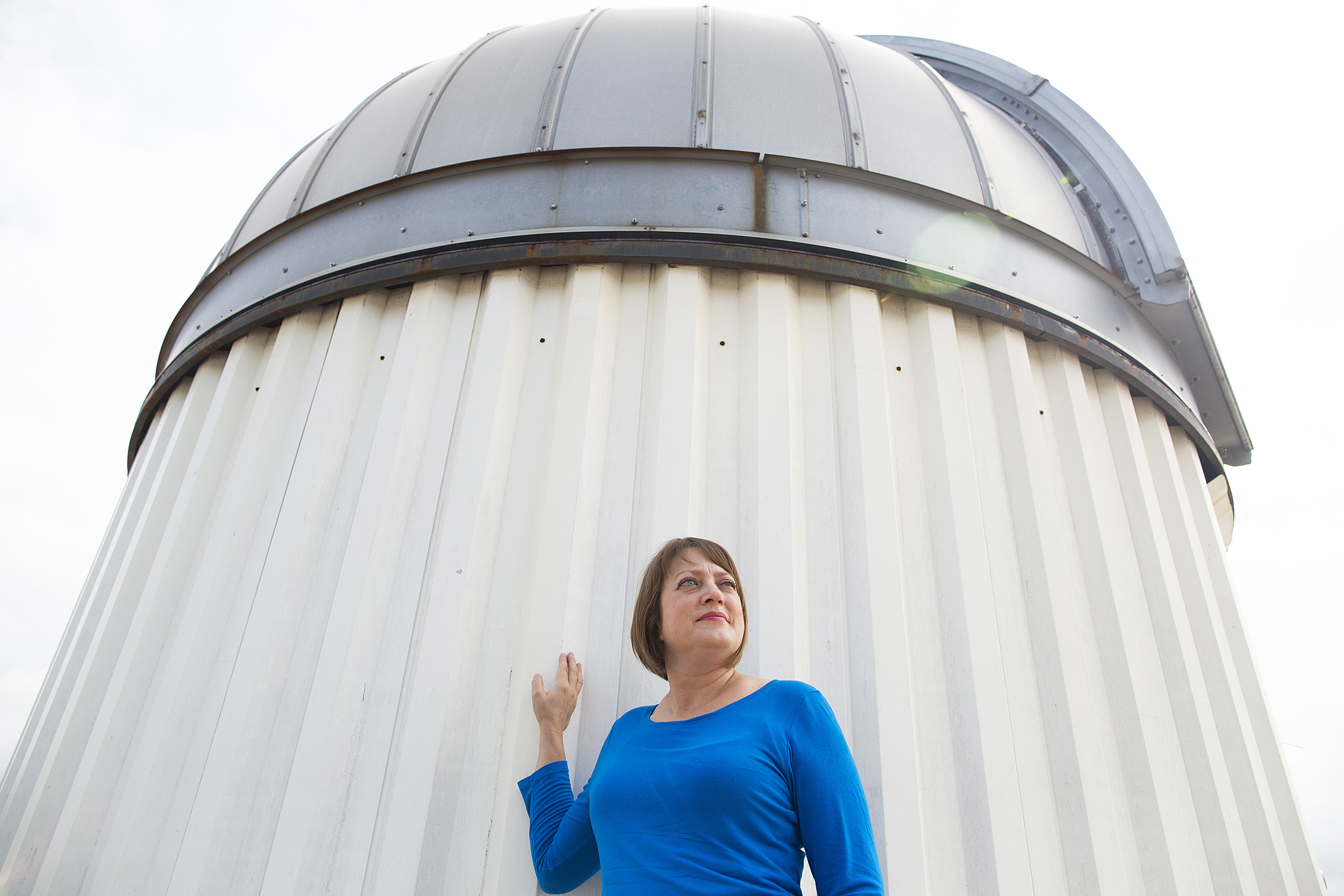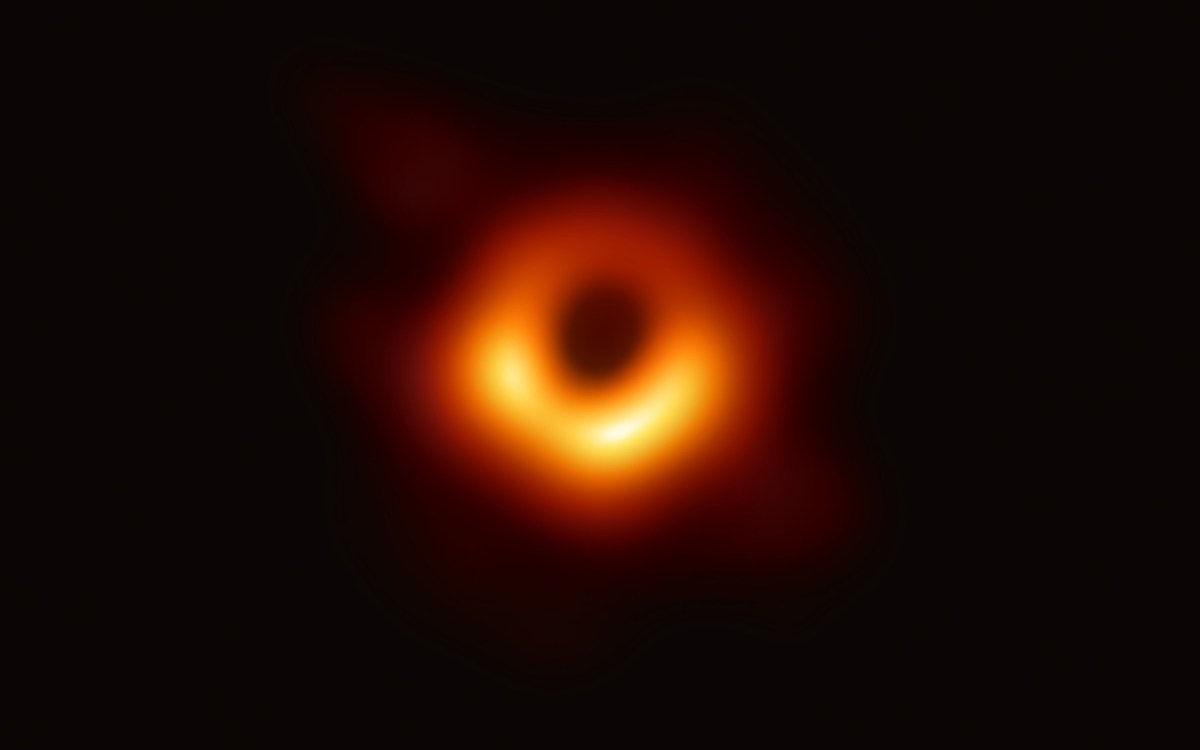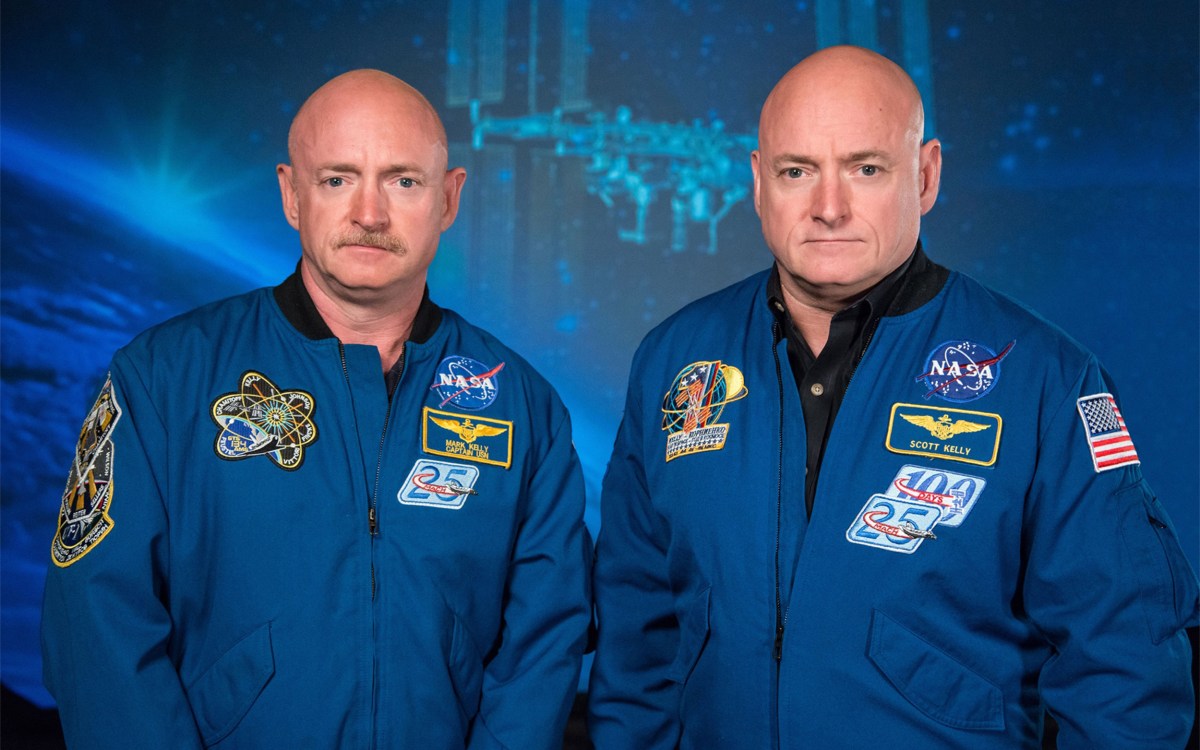
Jennifer G. Winters and her team are gathering data on the newly discovered planet.
Stephanie Mitchell/Harvard file photo
My three suns
Discovery of object with multiple stars offers insight into our planet
Planets that are even a little like Earth are hard to find. That’s why when astronomers like Jennifer G. Winters come across a body that may be solid, rocky, and possibly have its own atmosphere, they get excited. And especially so in a case like this: For although it is statistically unlikely to host life, finding one with three suns raises the likelihood that studying the planet may offer valuable insights into our own.
LTT1445Ab, as this new celestial object is called, is a transiting planet. As Winters, a postdoctoral research associate at the Harvard-Smithsonian Center for Astrophysics explained, that means that during its five-and-a half-day orbit around its main star, LTT1445Ab will pass in front of that star. This would allow observers on Earth to see the planet backlit, and may make it possible for them to discern whether LTT1445Ab (which is roughly 1.38 times the size of Earth and approximately 22.5 light-years away) has an atmosphere.
“We can stare at it using a spectrograph,” said Winters, lead author on “Three Red Suns in the Sky: A Transiting, Terrestrial Planet in a Triple M Dwarf System at 6.9 Parsecs,” published in the Astronomical Journal. “It’s one of the best examples of a rocky planet that might have an atmosphere that we can study to see what it’s made of.”
High on Winters’ list of questions: Is there going to be a molecular oxygen in the atmosphere? Even if it does have oxygen in its atmosphere, Winters was quick to note that her team does not expect to find life. “It’s not in the habitable zone of its star,” she said. “It’s too close. It’s too hot. But if it’s possible that there’s oxygen in the atmosphere that could come from other sources than life, that’s good to know.”
For the next few months, before the planet is hidden from our view behind the sun, Winters and her collaborators will gather data and monitor it. Using data from the Giant Magellan Telescope in Chile, as well as NASA’s Hubble and Spitzer space telescopes, the team will try to measure the planet’s mass and determine whether it is indeed a rocky, as opposed to gaseous, planet. The mass of the new find matters, she explained, because it correlates with how thick any atmosphere is expected to be. And if there is none — if, perhaps, one has been burned off by radiation — scientists will see whether one is sprouting, perhaps replenished by gases emitted by the crust.
“This is a great example for being able to study an atmosphere,” said Winters. “There’s only one other system that’s closer, and it has two planets, but the star is a lot brighter,” which makes any potential atmosphere difficult to see, she said. LTT1445Ab’s main star is approximately 25 percent the size of the sun, and its companion stars are smaller still.
The name LTT1445Ab comes from its listing in the Dutch American astronomer Willem Jacob Luyten’s eponymous catalog measuring star movement. The star’s location was discovered by NASA’s Transiting Exoplanet Survey Satellite, which scans the sky for just such candidates, notifying member scientists worldwide about stars that periodically dim — a possible sign of an orbiting planet. Winters’ team claimed this one to study, verifying that there was indeed a planet in the little system.
That grouping, with its three stars, intrigues her for other reasons as well. “It’s pretty rare for there to be three M dwarfs in a triple system,” Winters said, using the classification for the smallest and coolest type of star. In this case, while the planet appears to be orbiting the main star, the other two seem to be in some kind of dance, drawing closer to and then backing away from each other. These two then interact with the largest star on what seems to be a level plane — like marbles on a turntable. How exactly these three move around each other and what forces are at work are more puzzles the astronomers hope to solve.
In a way, the presence of a planet among these three miniature stars might prove more thrilling a discovery for Winters than LTT1445Ab alone. Since graduate school, she explained, M dwarfs have been her main area of interest.
“They make up 75 percent of all stars, so they’re the most populous type of star,” she said. This cluster, she added, “will help us learn more about star formation and planet formation.”








